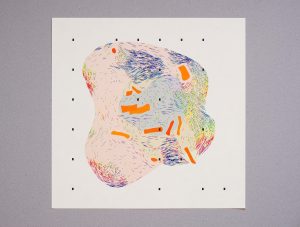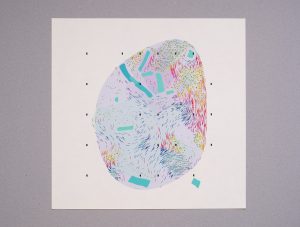Moka, an artist based in Los Angeles, uses software to generate art in all different media types: drawing, animation, etc. These drawings are computer generated using meteorologist maps and scientific visualizations of flow.


Unnatural Flux: computer generated drawings based on maps and data visualizations of flow
Moka, having been trained in communication design, rather than computer science or fine arts, has an interesting background that he clearly applies in approaching his work. Specifically, it adds a level of visual clarity that seems to be unique considering the medium of the work.
The aesthetic of these drawings is what initially drew me in because it doesn’t look computer generated, so the character is human like, but the artist was only able to design the back-end. With this kind of work, the design flow, from data to art, creates almost endless possibilities where each piece can become so independent from others and it has the potential to stand alone or with a group of similar pieces.
What I enjoy most about these works is this almost new-frontier of data visualizations. While the information isn’t 100% clear to the eye, if we were to begin to compare these drawings, for example, based on their location, we could begin to uncover more specific information. Being an architecture student, we are often confronted with diagramming site analysis or social demographics and it’s so unique to see software generated data that isn’t a chart or a graph.
For more information on this project click this: https://www.mokafolio.de/works/UnnaturalFlux
![[OLD FALL 2018] 15-104 • Introduction to Computing for Creative Practice](../../../../wp-content/uploads/2020/08/stop-banner.png)